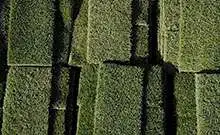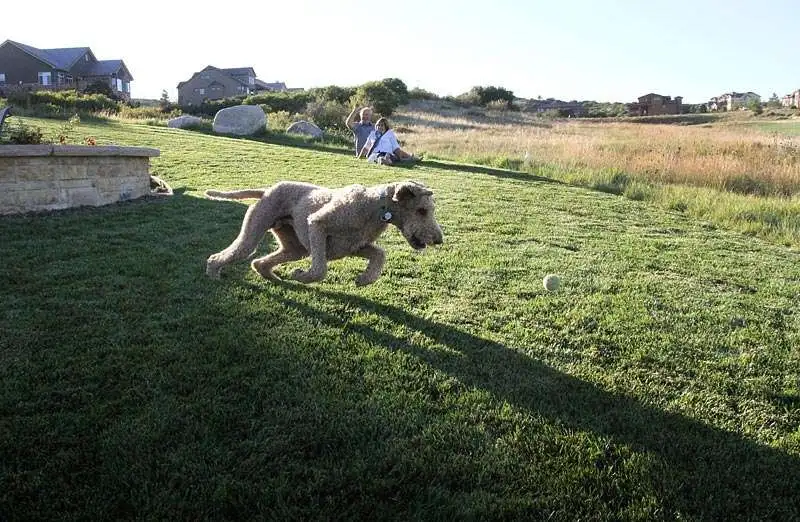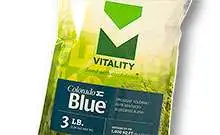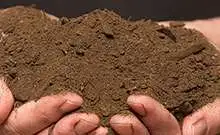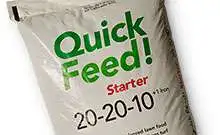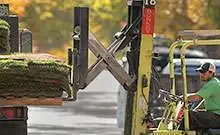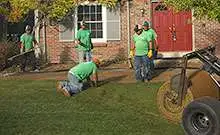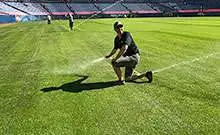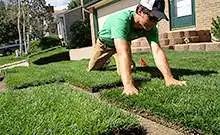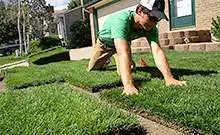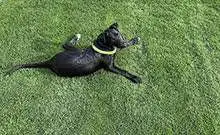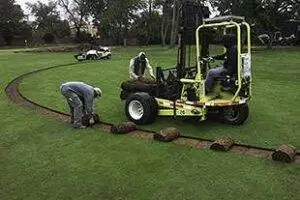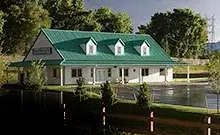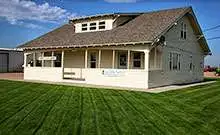SPRING FEED N-P-K
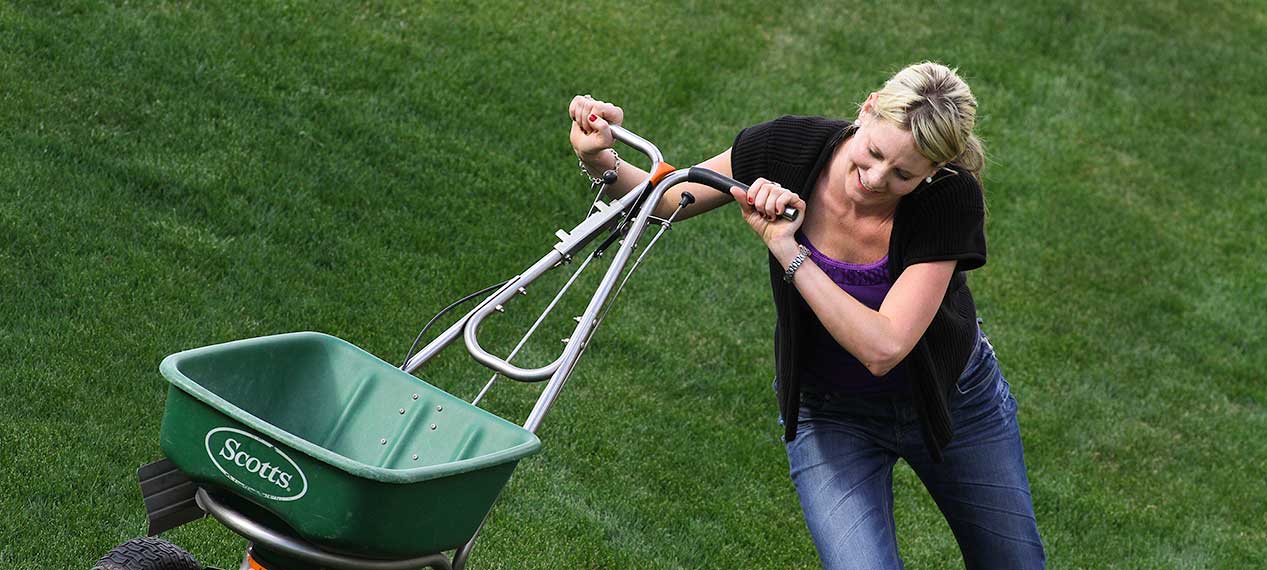
Fertilized after winter dormancy
Lawns in Denver are starting to green up and if you have not fertilized your yard, it’s time. After winter dormancy and a dry winter, your yard may be hungry. Fertilizer is food for your lawn and the last time it had any nutrition was probably last fall. Cool season grasses like to fill in this time of year and an application of fertilizer goes a long way to improving your root system and filling in weak spots. Spring fertilization will set your yard up for summer. Your lawn gets nitrogen from rain and snow. After a dry winter, give your yard some nutrition. Have a look at your yard and rate it. Good condition (even and dense), OK condition (could be thicker with a few problem areas), or Poor condition (thin & bare, not healthy). Now, let’s talk about fertilizer.
Understanding Fertilizer
There are many different types and brands of lawn fertilizer, but one aspect they all have in common are the 3 numbers on the front of the bag. The 3 numbers represent the ratio of the three nutrients that make up most fertilizers. This is called the N-P-K ratio. A 20-20-10 is made up of 20% Nitrogen, 20% Phosphorus and 10% Potassium.
N for Nitrogen, makes grass grow and become greener. This generally is the most important nutrient to having a nice lawn. Traditional release nitrogen will work fast but only stay in the soil for a few weeks due to plant uptake and leaching. This is not necessarily bad if your lawn is hungry. Slow release nitrogen stays around a few months and feeds your lawn more evenly. Organic Nitrogen sources feed very slowly and may take 1 to 2 months to see results.
P for Phosphorus, stimulates roots and new plant development. Phosphorus is important to the root system and will help thicken up your yard. Phosphorus will stay in your soil for at least a year.
K for Potassium, promotes disease and drought tolerance. Potassium prepares your lawn for the heat of the summer as well. Potassium stays in the soil for several months.
What type of Fertilizer?
There are many lawn fertilizers to choose from. Look for a fertilizer that is made for Colorado soils. Using a fertilizer with 20% nitrogen is easier to spread evenly than a fertilizer with 46% nitrogen because you have more products to work with. Smaller bags of fertilizer (10 lbs. to 20 lbs.) tends to mean higher nitrogen numbers, less Phosphorus & Potassium numbers, cost less, are not as effective in our dry climate.
Traditional, Slow Release and Organic lawn fertilizer
20-20-10 1fe
This is a fast release fertilizer that has a fast release Nitrogen with plenty of Phosphorus & Potassium. Full analysis or balanced fertilizer has close to all three nutrients stated by the numbers, the N-P-K. If your yard is in Poor or in OK condition, or if your yard is in Good condition and you want to green it up quickly, use a full analysis fertilizer. This is a good safeguard because now your yard is getting all the nutrients and will not have a nutrient deficiency later. Remember, Phosphorus and Potassium stay around in the soil longer than nitrogen. Iron (fe) and sulfur are good for you lawn as well.
20-5-5 1fe Slow Release
This is a slow release fertilizer. The nitrogen source in this fertilizer is half slow release and half traditional. Also notice the Phosphorus and Potassium are only 5’s. This is because if you fertilize 2 to 3 times a year, your soil should have enough P and K in it. Slow release fertilizers promote even growth so you do not get a growth surge right after you fertilize. Use slow releases fertilizers if your lawn is in Good condition. If your yard is in OK condition and you’re not concerned with winning the best yard on the block award, this is also a good choice.
8-2-1 100% Organic
Organic nitrogen in this case, is derived from dried poultry manure, releases very slowly over months and may be around for up to a year. Notice it is 8% nitrogen meaning you will need to use more products to get the same amount of food for your lawn. There is less nitrogen in this fertilizer and it will release very slowly over months. When you use an organic fertilizer, it takes a while to see the results and you will use more pounds of fertilizer to make up the difference. Organic fertilizers can be used with traditional lawn fertilizer to help condition and build nutrients into your soil. One more thing, the earth’s atmosphere consists of 78 percent nitrogen. Now get out there and feed your yard!

